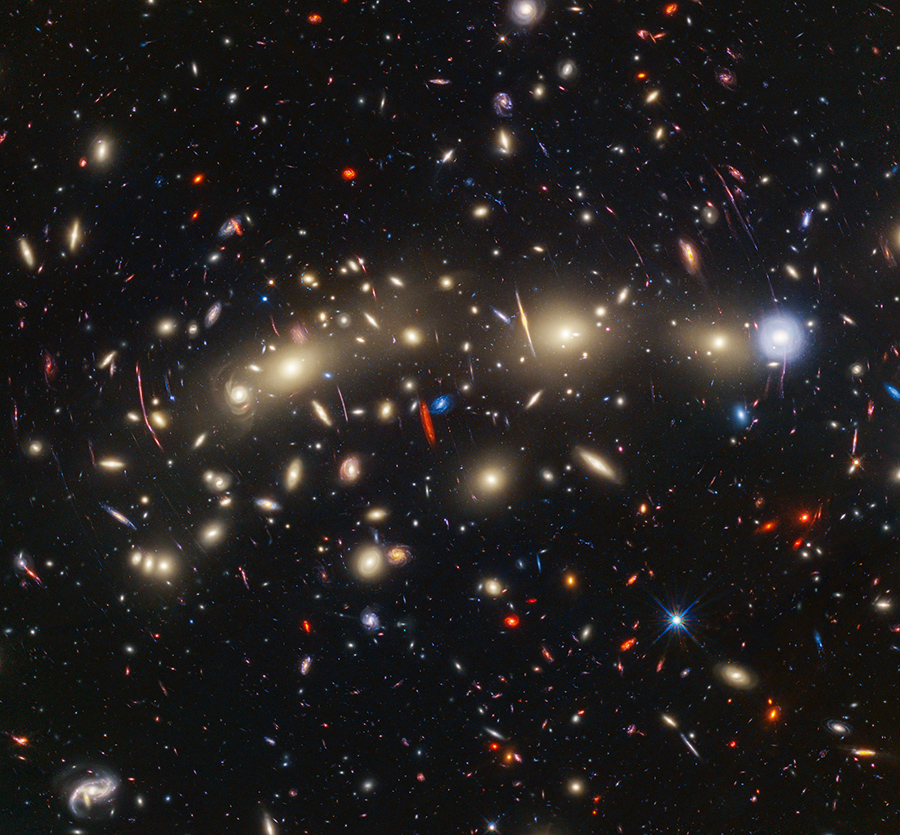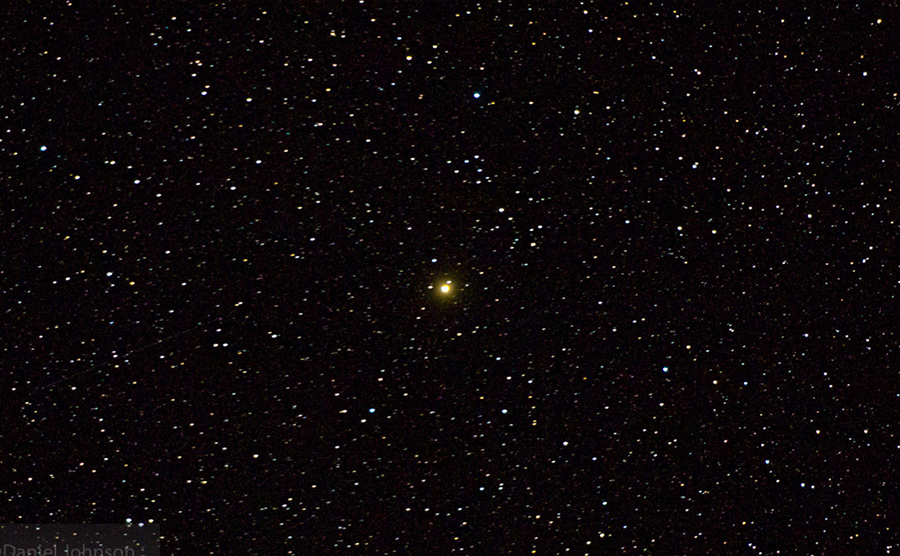
Astronomers Discover 562 New Candidate Strong Lenses With Machine Learning
An international research collaboration trained computers to sift through millions of images for cosmic treasure.

This Week's Sky at a Glance, December 1 – 9
These moonless evenings open up the deep sky. For many of us the viewing is especially crisp through the low-humidity December air. The Big Dipper lies low, Cassiopeia stands high, and the Andromeda Galaxy crosses the zenith.

December Podcast: A Tower of Brilliant Stars
This month’s Sky Tour podcast introduces you to a “tower of brilliance” in the eastern evening sky, along with tips for finding four planets and watching mid-December’s impressive Geminid meteor shower.

Six Sub-Neptunes Discovered 100 Light-Years Away
Astronomers have uncovered six sub-Neptune exoplanets dancing in lock-step around the same distant star, shedding light on their formation.

Do Glaciers on Mercury Suggest Such a Planet Could Be Habitable?
Salt glaciers on Mercury suggest conditions friendly to life — but not life itself — might once have existed on the innermost planet.

Amateur Astronomers Discover an Asteroid’s Moon
The small object orbiting around main-belt asteroid 5457 Queen’s is the second confirmed asteroid moon discovered during a stellar occultation.

This Week's Sky at a Glance, November 24 – December 3
This Tuesday the 28th we will see the Moon rise in twilight as far north as it possibly can. Do you know why?

Asteroid Named for Sky & Telescope’s Gary Seronik
The International Astronomical Union has named the asteroid provisionally designated as 1993 FE15 after Sky & Telescope's Consulting Editor Gary Seronik: 20046 Seronik.

Astronomers Find a Brilliant Explosion That Just Keeps On Exploding
A brilliant flash of blue light briefly outshined its host galaxy before fading away — but then it exploded again and again, shedding light on the nature of its source.

How Did the Ancients Predict Eclipses? The Saros Cycle
Before the advent of computers or even a working theory of the solar system, the ancients predicted solar eclipses. How did they do it?

Watch Uranus's Moon Titania Cover a Star Monday Night
Observers across much of the U.S. and Canada have a unique opportunity Monday night, November 20–21, to see Uranus's brightest moon occult a star.

This Week's Sky at a Glance, November 17 – 26
The bright gibbous Moon this week passes Saturn, then Jupiter, inviting telescopes of all sizes. And as winter approaches, Orion rises earlier and earlier.

Astronomy in Space with David Dickinson
Samples of Asteroid Ryugu Show Signs of Ancient Water
The distribution of elements seen in the samples of Ryugu brought back by Hayabusa 2 hints at a wet past.

Webb Telescope Peers into Puffy Planet with Clouds of Sand
A mere 200 light-years away, there's a planet with the density of styrofoam and clouds of sand. How did it get so weird?

Explore the Night with Bob King
Jupiter's Great Red Spot Just Keeps Getting Smaller
Jupiter's Great Red Spot may be reaching a milestone this year by shrinking to its smallest size in recorded observational history.

Atomic Oxygen Detected on Venus
New data provide direct evidence for the existence of atomic oxygen in Venus's upper atmosphere, enabling new science on our sister planet.

Webb Shows Planets Really Do Start with Pebbles
New observations have turned up evidence that icy pebbles deliver the water to inner regions of planet-forming disks.

This Week's Sky at a Glance, November 10 – 19
The crescent Moon slips down into the sunrise and then up in the afterglow of sunset, guiding the way to the last stars of Sagittarius right after dark. A few days later it passes Saturn.

Webb, Hubble Telescopes Team Up to Create "Most Colorful View of the Universe"
The Hubble and Webb Space Telescopes have revealed a bounty of galaxies in a pair of colliding clusters, capturing twinkling lights within.

Meet Enif, the Nose of Pegasus
Enif, the nose of Pegasus, is a supergiant star and the brightest member of the constellation. Find out more about this star and its place in our skies.
